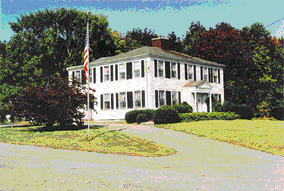The Homestead

The "original Homestead" was built in 1767 by Deacon Jeremiah Beals. It was enlarged by Jeremiah Beals Jr. for his bride in about 1807. The Beals's were direct descendants of Hingham's John Beal who became one of the first shoemakers in America in 1638. The Homestead remained in their family for over 100 years. Throughout much of the 19th century, the Homestead was used as a tavern where travelers on the old Boston-Taunton Turnpike could stop over for rest and refreshment. It was originally called "The Solid Rock Inn" because of the huge glacial erratic in the front yard. The building was acquired by the Brockton Historical Society in 1971. Since the Homestead has never undergone major restoration, it reflects a remarkable mix of 18th, 19th, and early 20th century architecture and use. Featured items include primitive tools, a cast iron kitchen stove from the turn of the century, and a number of intricate tin ceilings and walls from the 1920s. The Homestead's north parlor, which was once commonly used for weddings, Sunday company, and funerals, displays impressive paintings of the turn-of-the-century Massachusetts Governor, and world famous shoe maker, William L. Douglas and his wife, Naomi. The Homestead's library contains books, photographs, and genealogical materials relating to every period of Brockton's rich social and economic history.

